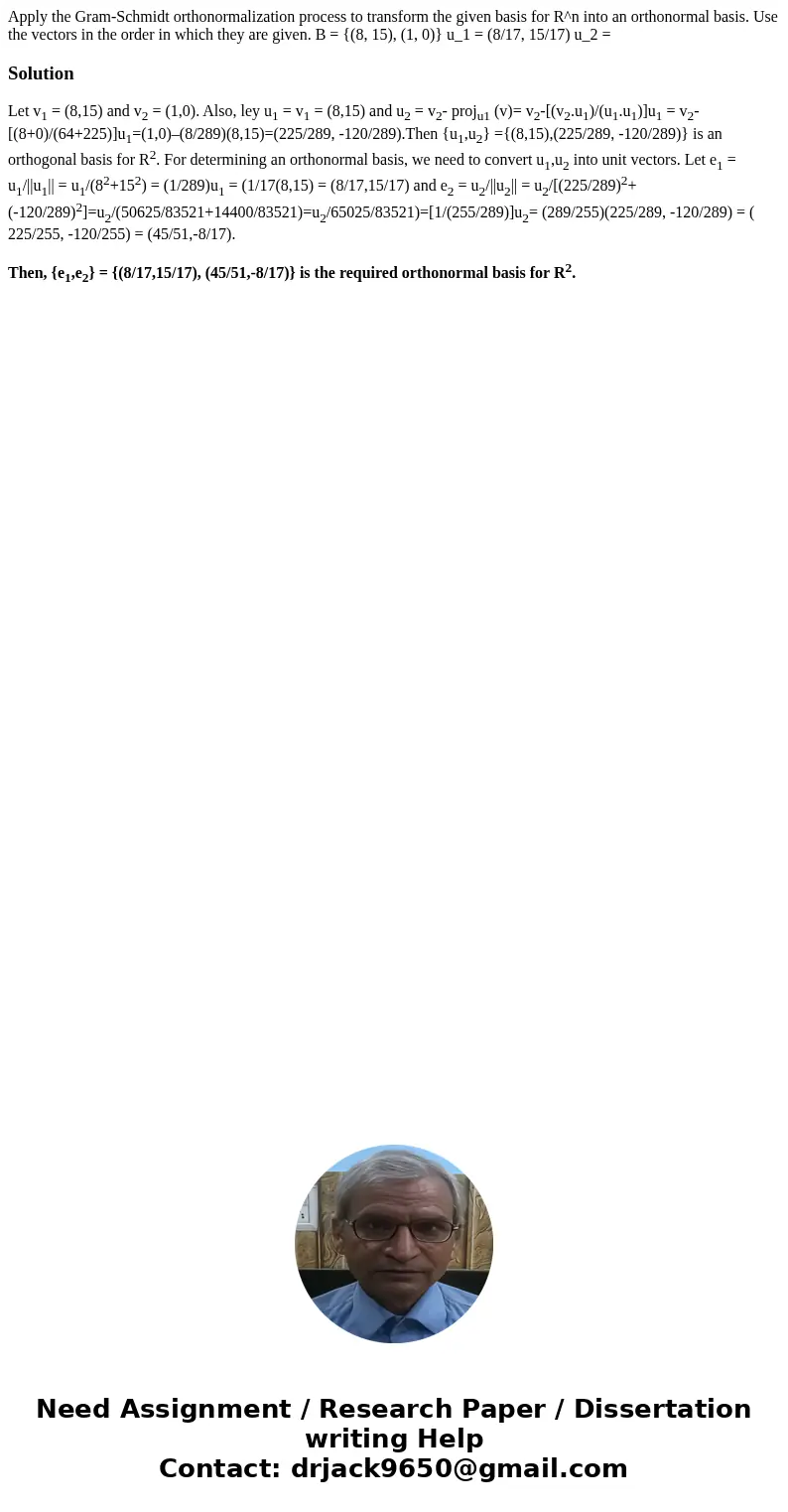Apply the GramSchmidt orthonormalization process to transfor
Apply the Gram-Schmidt orthonormalization process to transform the given basis for R^n into an orthonormal basis. Use the vectors in the order in which they are given. B = {(8, 15), (1, 0)} u_1 = (8/17, 15/17) u_2 =
Solution
Let v1 = (8,15) and v2 = (1,0). Also, ley u1 = v1 = (8,15) and u2 = v2- proju1 (v)= v2-[(v2.u1)/(u1.u1)]u1 = v2-[(8+0)/(64+225)]u1=(1,0)–(8/289)(8,15)=(225/289, -120/289).Then {u1,u2} ={(8,15),(225/289, -120/289)} is an orthogonal basis for R2. For determining an orthonormal basis, we need to convert u1,u2 into unit vectors. Let e1 = u1/||u1|| = u1/(82+152) = (1/289)u1 = (1/17(8,15) = (8/17,15/17) and e2 = u2/||u2|| = u2/[(225/289)2+(-120/289)2]=u2/(50625/83521+14400/83521)=u2/65025/83521)=[1/(255/289)]u2= (289/255)(225/289, -120/289) = ( 225/255, -120/255) = (45/51,-8/17).
Then, {e1,e2} = {(8/17,15/17), (45/51,-8/17)} is the required orthonormal basis for R2.

 Homework Sourse
Homework Sourse